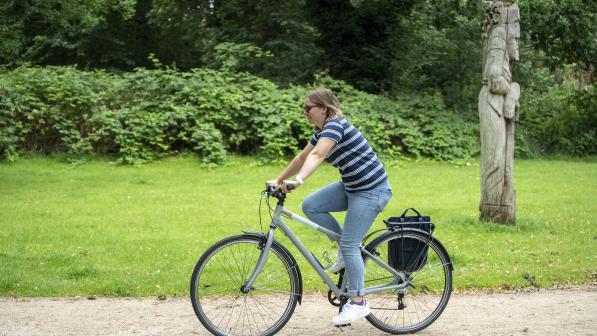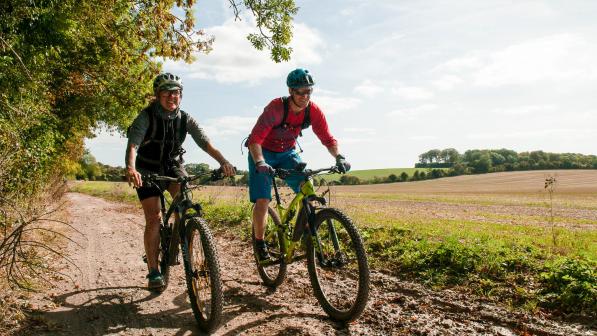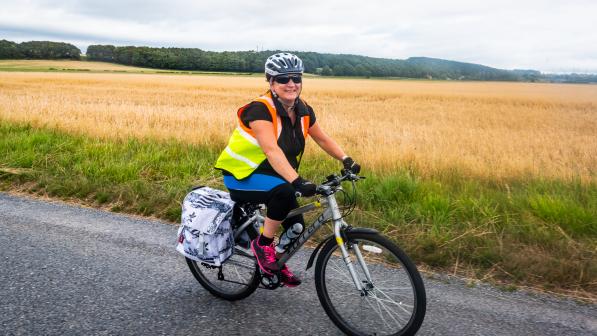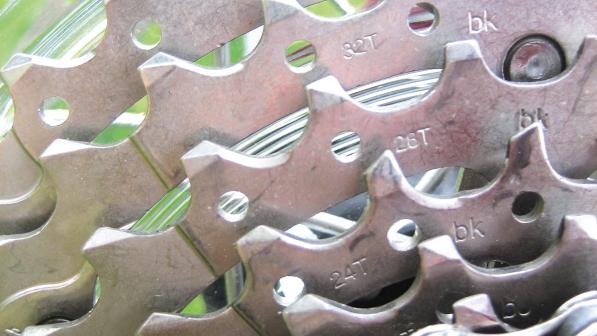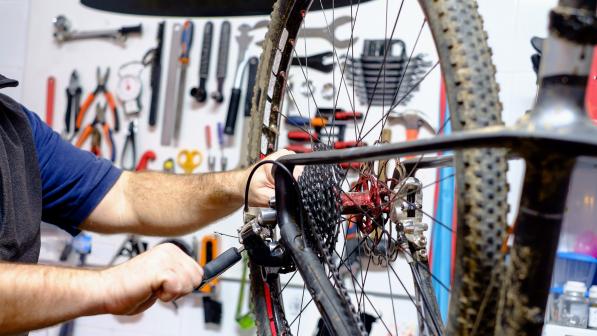A beginners’ guide to … gears

Gearing up for cycling can seem overwhelming for beginners, but understanding how cycle gears work is important for an enjoyable and efficient ride. This guide will help give you some clarity when it comes to gears, helping you ride smarter and tackle various terrains with confidence.
Understanding gears
Cycle gears are a system of cogs and chains that adjust the bike’s resistance and pedalling difficulty. They allow you to maintain a comfortable pedalling speed (cadence) regardless of the terrain. Modern cycles typically come with multiple gears; depending on the type of bike this number can range quite a bit.
Basic components of gears
Chainrings
These are located at the front of the bike and are attached to the pedals. Traditional bikes have one to three chainrings, with most having two (called a double or 2x) or three (called a triple or 3x) chainrings. Single (or 1x) chainrings are gaining popularity, particularly among mountain bikers, but are still a fairly niche option for most people.
Cassette
The cassette is a set of cogs located at the rear wheel. The number of cogs varies as well as the number of teeth on each cog. The number of cogs that your cycle has influences the number of gears that you have available.
Derailleurs
These are devices that move the chain between chainrings and cogs, controlled by shifters on the handlebars.
- Front derailleur: shifts the chain between the front chainrings
- Rear derailleur: shifts the chain between the rear cogs in the cassette
Shifters
These are the controls that allow you to change gear on your cycle. They are usually found on the handle bar.

How gears work
The gear system adjusts the bike’s resistance, making pedalling easier or harder depending on what gear you’re in and the terrain that you’re on. Here’s how it works.
Lower gears (easier pedalling)
Lower gears while cycling are ideal for climbing hills or riding against the wind. Setting your cycle in lower gears is achieved by shifting to a smaller chainring at the front and a larger cog at the back. This results in having to work less to turn the pedals, with them turning more freely.
Higher gears (harder pedalling)
Putting your cycle in higher gears is best for descending or riding at high speeds on flat terrain. The higher gears on a bike are achieved by shifting to a larger chainring at the front and a smaller cog at the back. This configuration then means there is more resistance in the pedals, resulting in more power being transferred into the back wheel.
Number of gears
When discussing the number of ‘speeds/gears’ a bike has, it’s easy to get confused. Some manufacturers often multiply the number of cogs at the back by the number of chainrings at the front to make the total number of gears seem more impressive. However, due to gear overlap, an 8×2 setup doesn’t truly provide 16 individual gears.
Experienced cyclists will often refer to the number of cogs in the cassette at the back of the bike, calling it an 8-speed, 9-speed, and so on. They might also specify whether their bike has a single, double or triple chainring, or simply use terms like “8×2” or “2×8”.
When to shift gears
Shifting gears effectively can make your ride smoother and more enjoyable. Here are some tips.
Plan for the terrain ahead
It’s best to shift gears before you reach a hill or a flat section. This helps maintain your momentum and prevents sudden strain on your muscles and the bike.
You don’t want to be on a hill struggling in a high gear and having to change down as this will effect your momentum, shifting down as you approach will allow you to easily transfer to the new terrain.
Consistent cadence
Aim to keep a steady cadence or pedalling speed, usually between 60-90 RPM (revolutions per minute). Shift your gears to maintain this rhythm as you’re cycling for the best momentum and an easier ride.
Avoid cross chaining
Cross chaining is when you use a gear combinations that places the chain at extreme angles, such as the largest chainring with the largest rear cog or the smallest chainring with the smallest rear cog.
This is to be avoided because it increases wear and tear on the chain and cogs, reduces pedalling efficiency due to increased friction, impacts shifting performance and can cause noise.
All these issues will shorten the lifespan of your drivetrain components (all the parts on your bike involved in turning power from you into forward momentum) but will also lead to a less efficient and less enjoyable ride. To avoid these problems, make sure you use gear combinations that keep the chain as straight as possible.
Tips for beginners
Practice shifting
Spend time in a safe, flat area practicing shifting gears. Get a feel for how your bike responds and how the gears affect your pedalling. This will allow you to understand what gear you should be in when you’re out and about, and on different terrains.
Listen to your bike
If you hear grinding or clunking noises when shifting, this might mean that you need to adjust the gear that you’re in. It’s also worth remembering that regular maintenance and tuning are essential for your gears to operate at their most effective.
Stay relaxed
When out on your bike shifting should be smooth and controlled. Try to avoid abrupt or forceful shifts, this can strain the chain and derailleurs resulting in damage to your bike.
Final thoughts
Understanding and mastering your bike’s gears can significantly improve your cycling experience. With practice and patience, you’ll become more confident and efficient on your rides, regardless of the terrain that you find yourself on.
Remember, the key is to stay relaxed, anticipate changes in the terrain, and maintain a steady pedalling speed.

